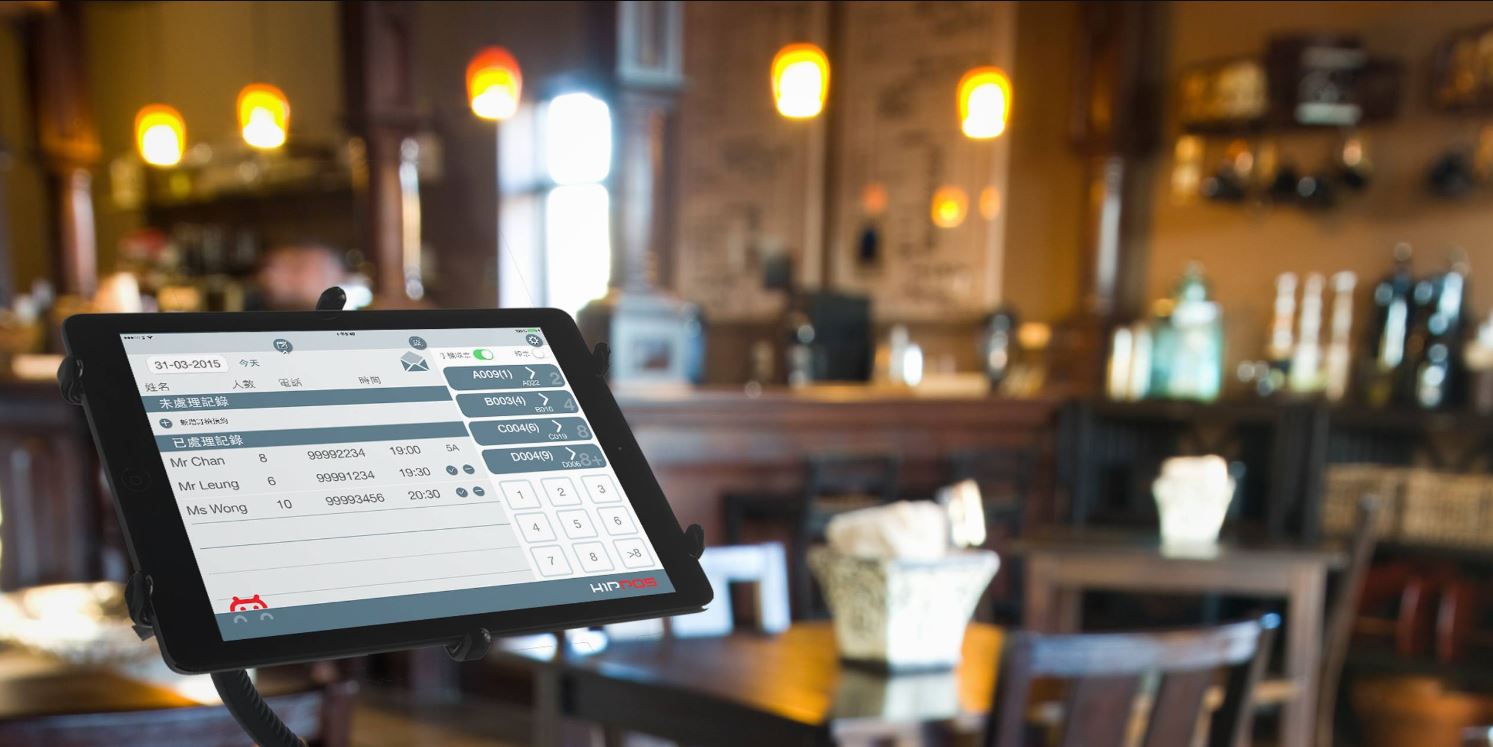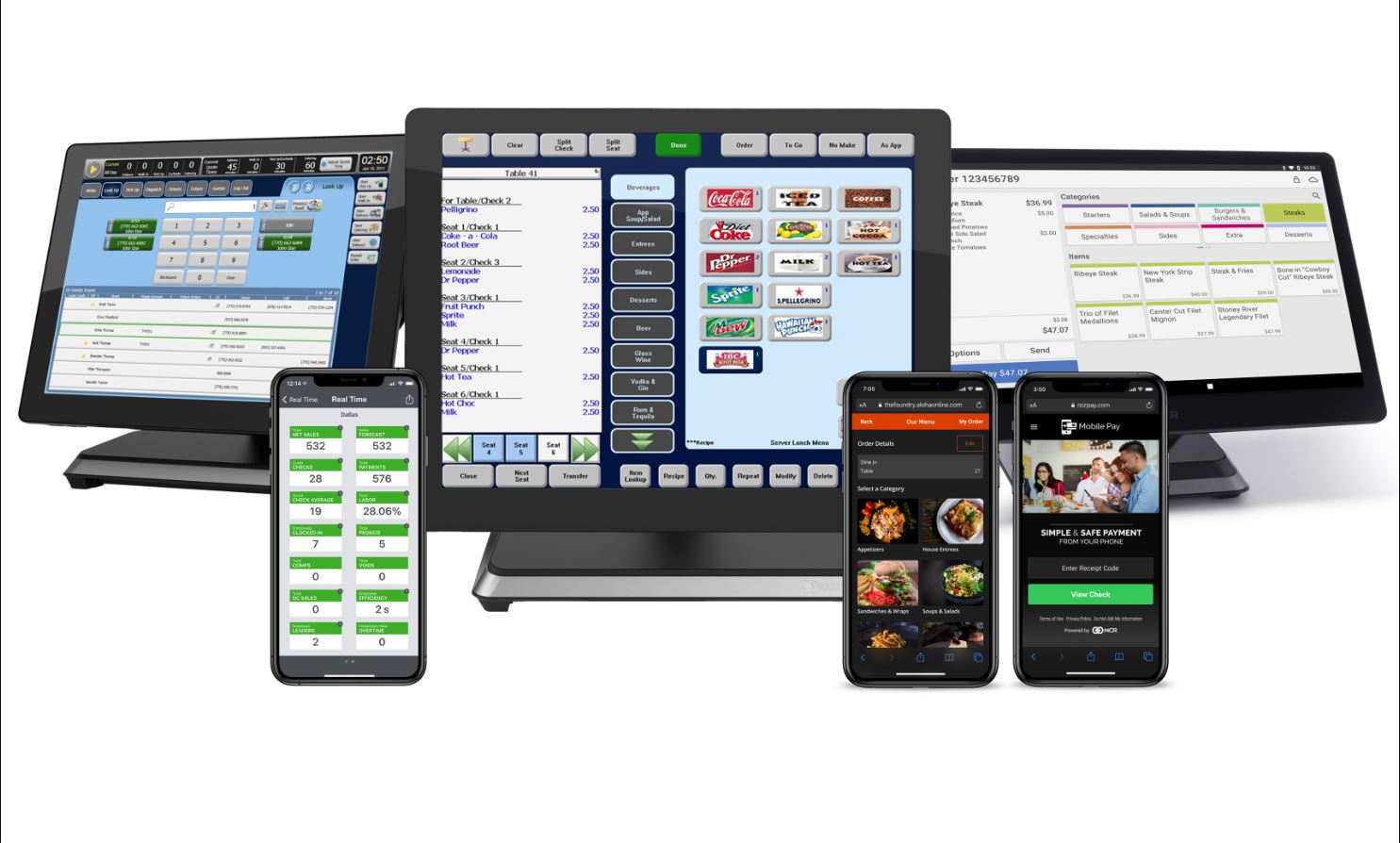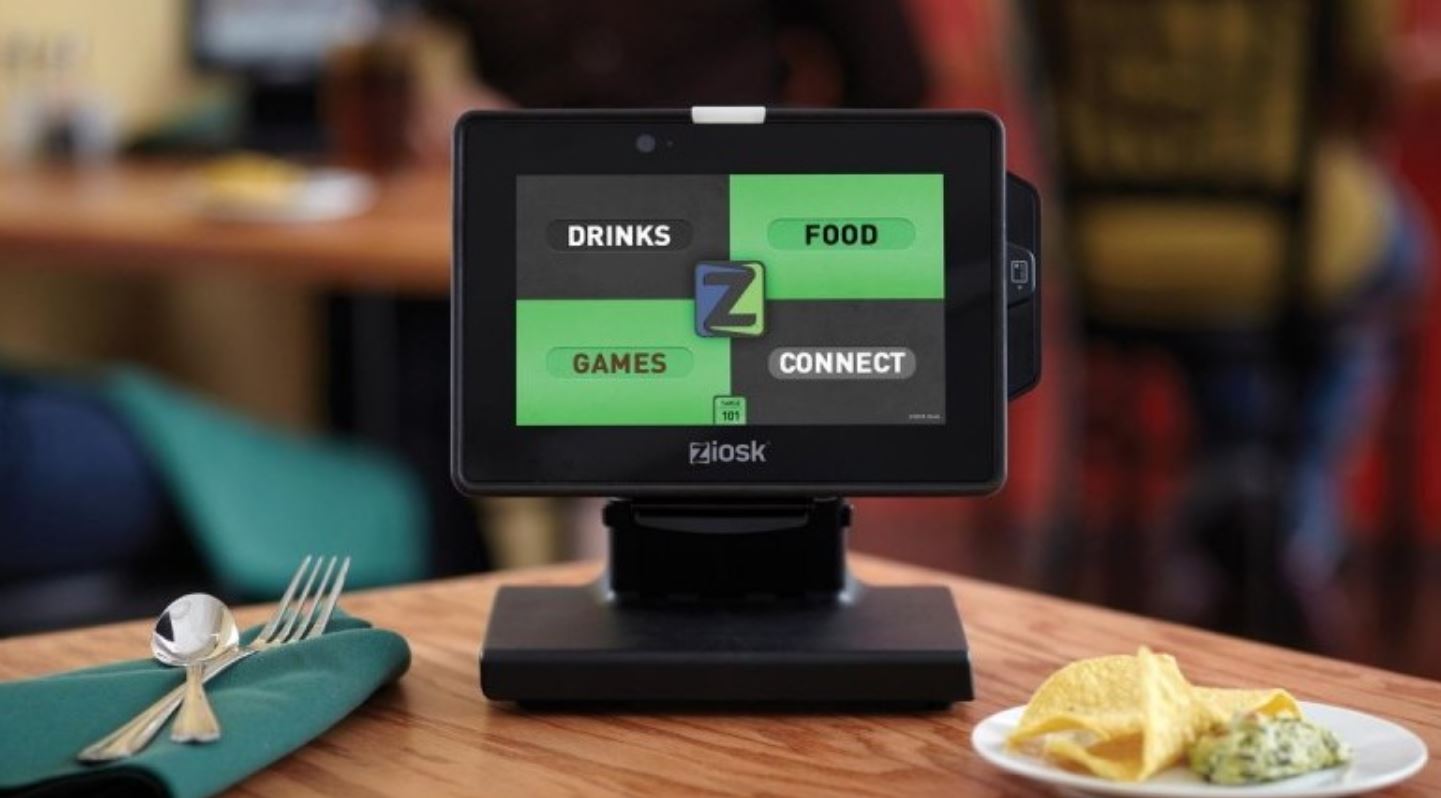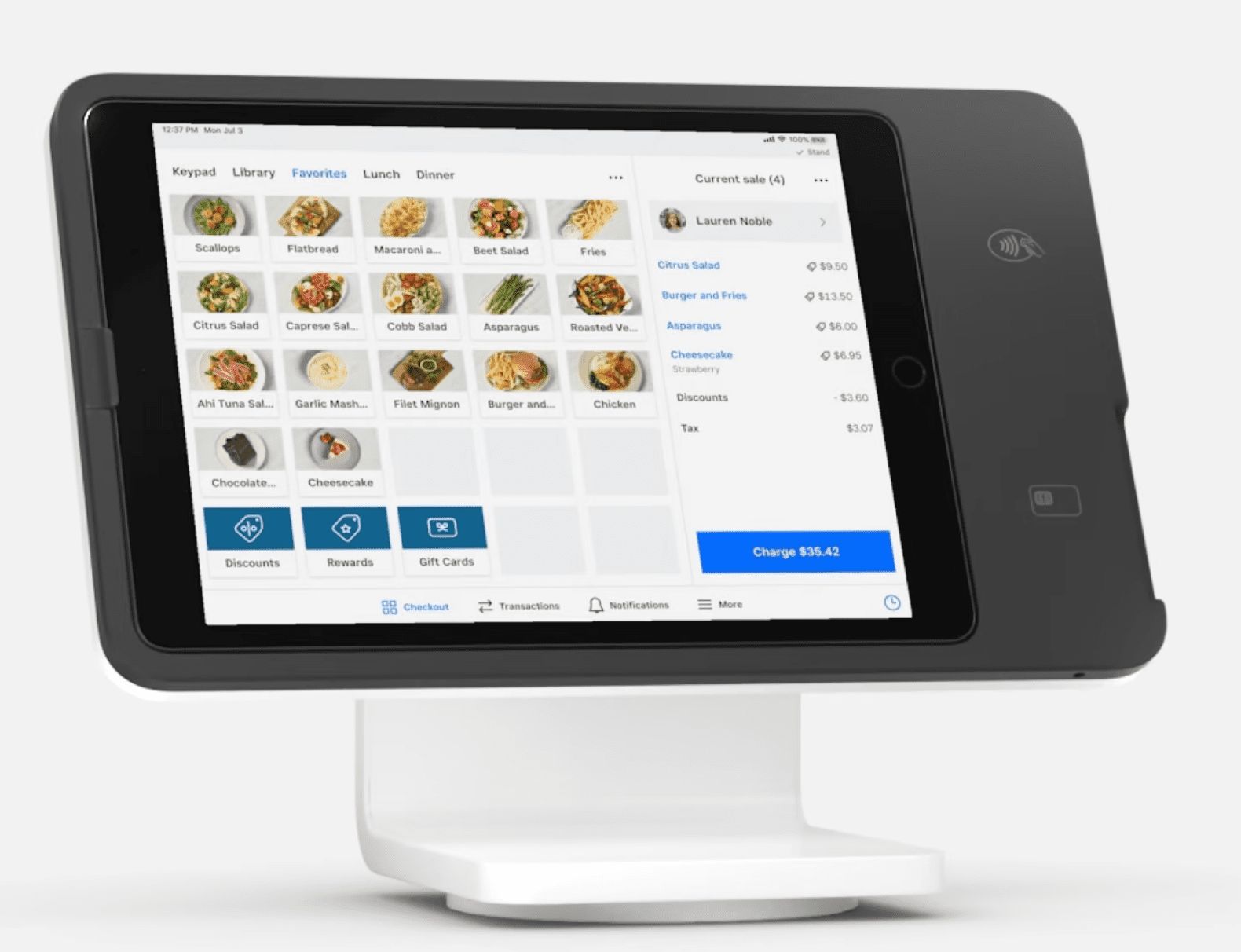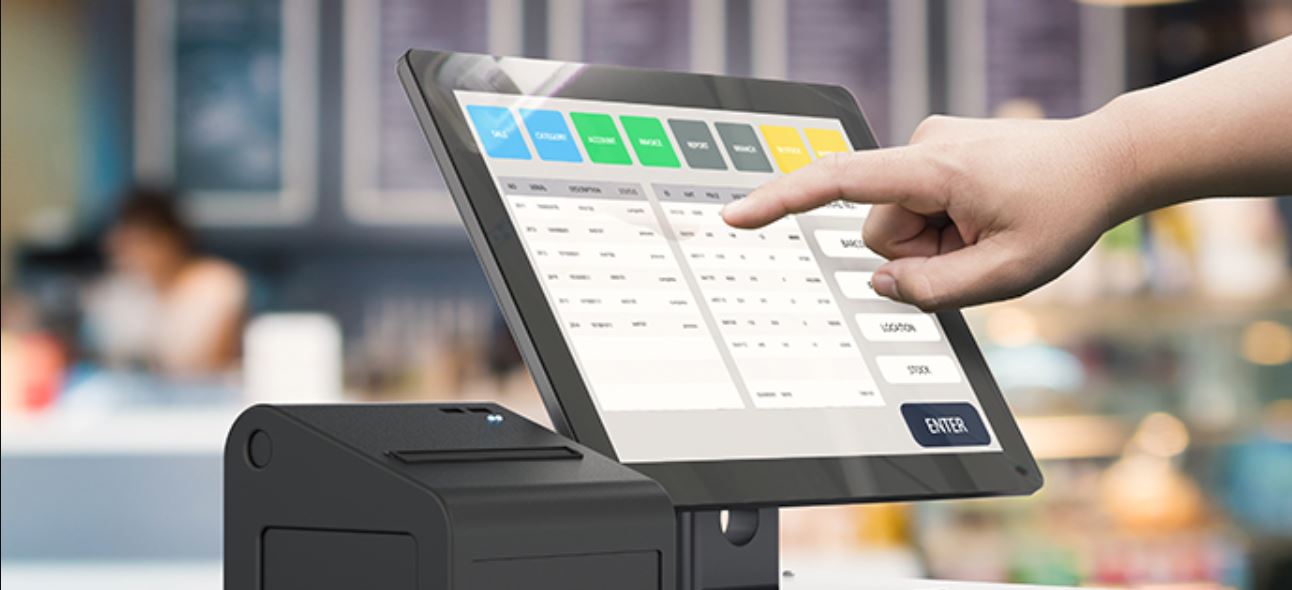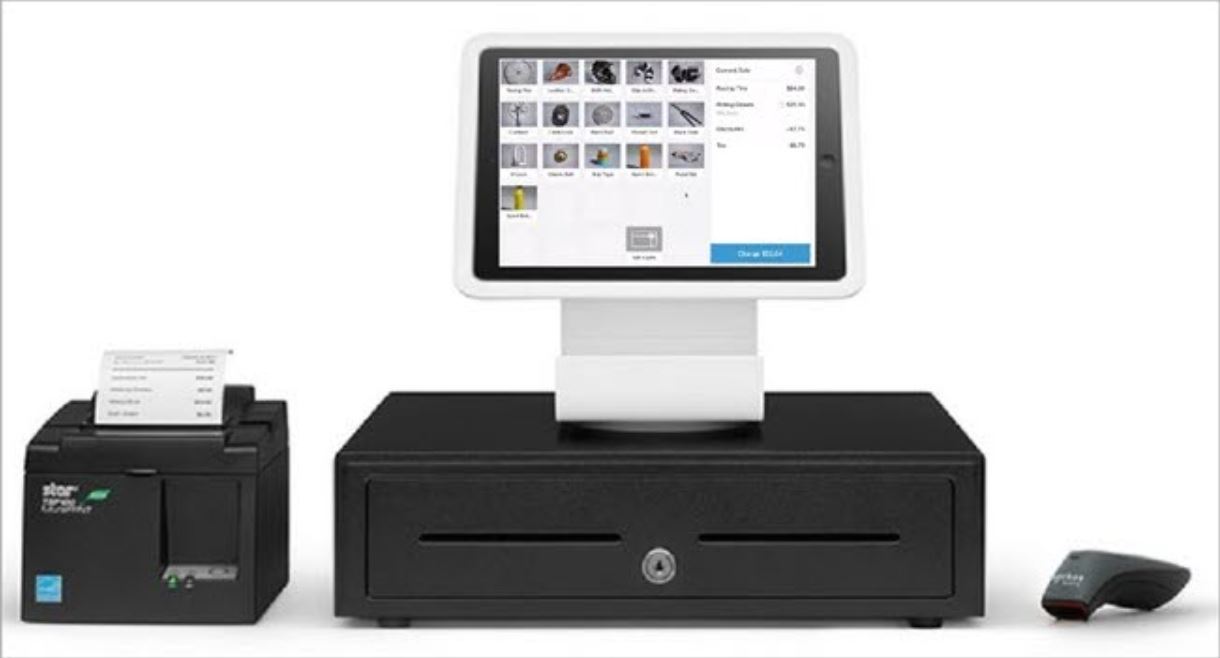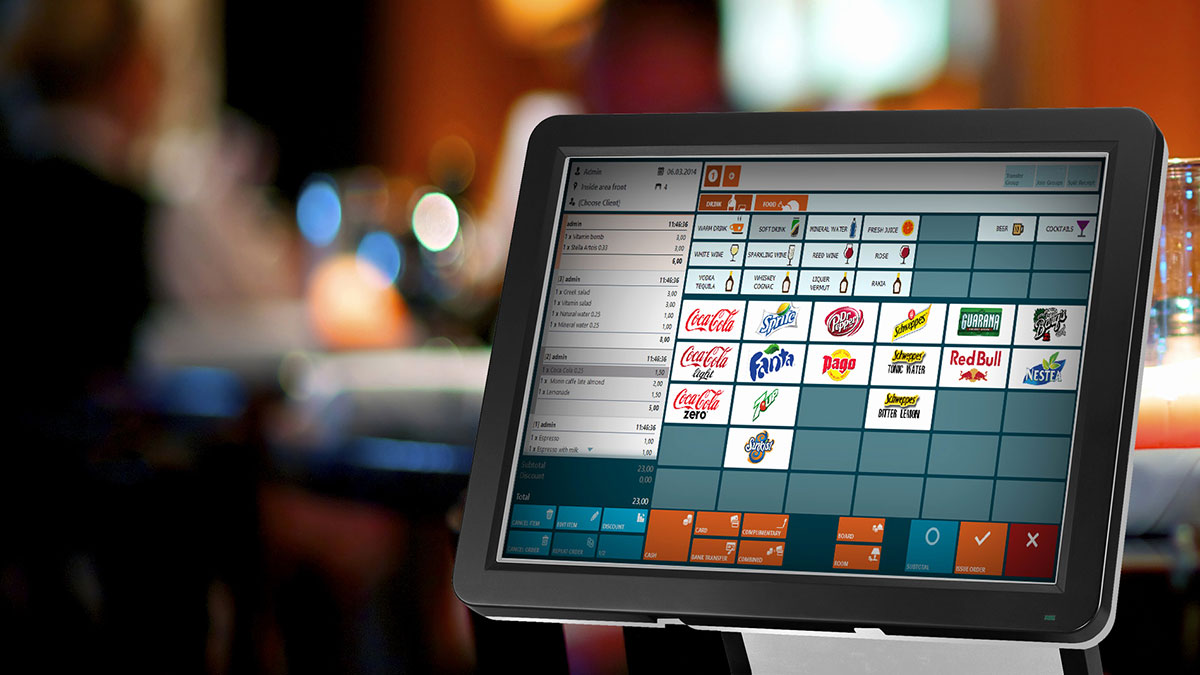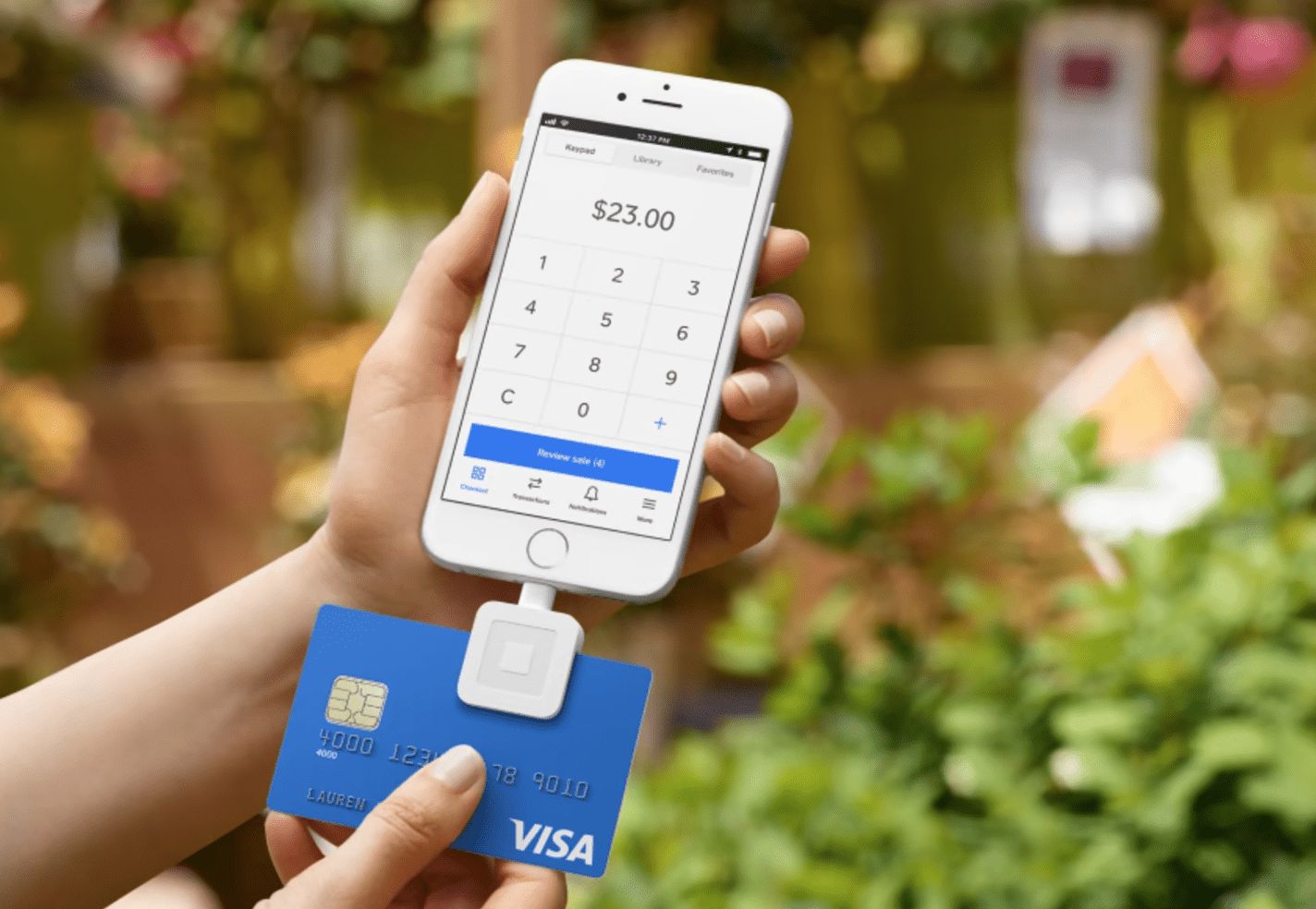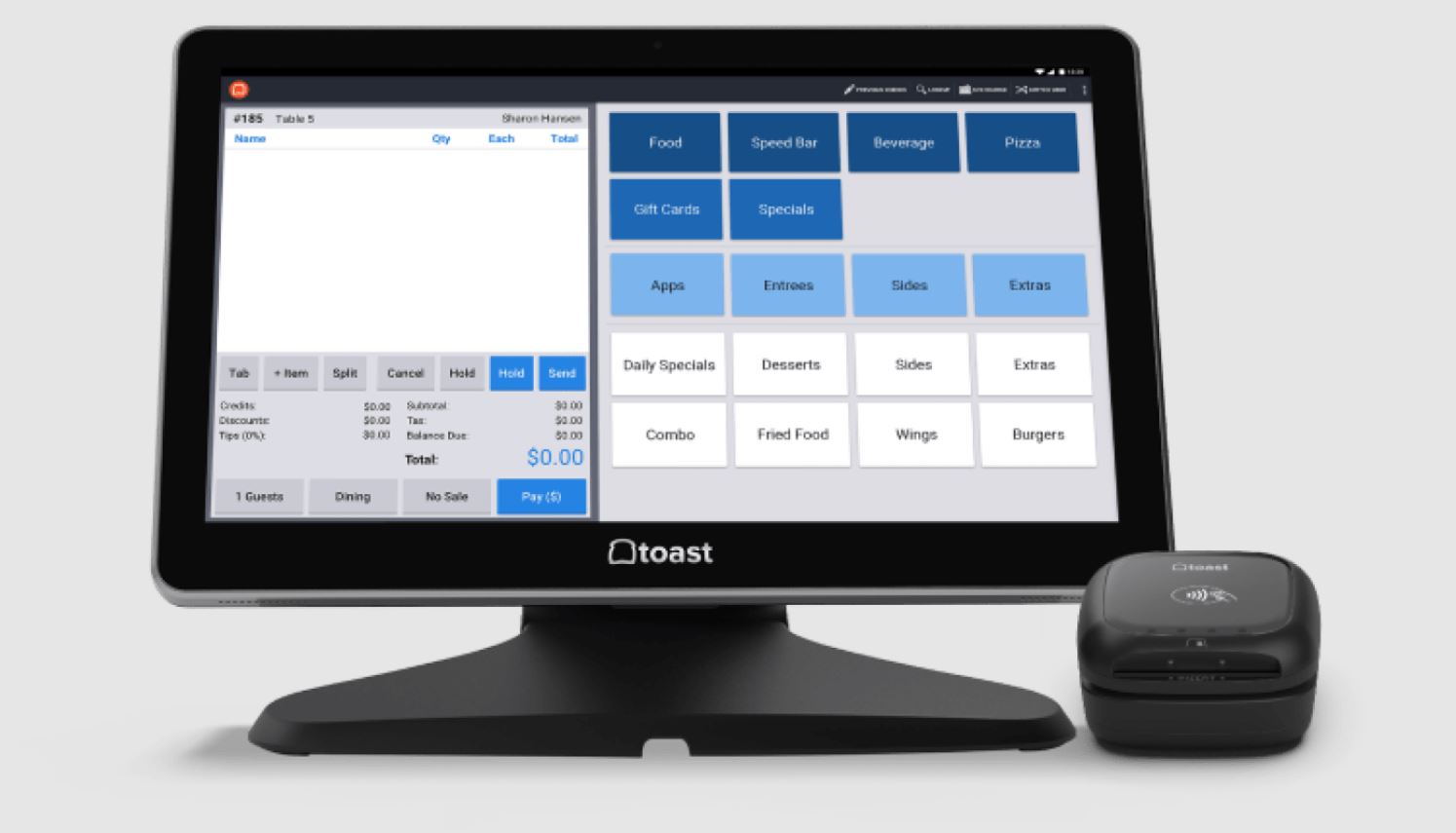Introduction
Operating a restaurant can be a complex task, as it involves numerous activities such as taking orders, managing inventory, processing payments, and analyzing sales data. To streamline these operations, many restaurants turn to Point of Sale (POS) systems, which provide a centralized platform for managing various aspects of the business efficiently.
A POS system for restaurants is a combination of hardware and software that allows restaurant owners and managers to integrate their operations, automate processes, and improve overall efficiency. These systems are specifically designed to cater to the unique needs of the foodservice industry, offering features like order management, table mapping, inventory tracking, and reporting capabilities.
By implementing a POS system, restaurant owners can experience a wide range of benefits. Firstly, it enables them to enhance the speed and accuracy of their operations. Orders can be swiftly processed, reducing wait times for customers and increasing customer satisfaction. Additionally, the system can help prevent errors in order placement and calculations, minimizing the risk of mistakes and potential disputes.
Another significant advantage of using a POS system is the ability to track and analyze sales data. The system provides valuable insights into the restaurant’s performance, such as popular menu items, peak hours, and customer preferences. These insights can be used for making informed decisions on inventory management, pricing strategies, and marketing campaigns, ultimately boosting profitability.
Furthermore, a POS system simplifies the payment process for both customers and staff. It supports various payment methods, including cash, credit cards, and mobile wallets, making transactions seamless and convenient. This not only speeds up the payment process but also reduces the chances of errors or discrepancies.
When choosing a POS system for restaurants, several factors need to be considered. Firstly, the system should be easy to use and intuitive, as restaurant staff may have varying levels of technical expertise. It should also offer robust reporting capabilities, allowing for detailed analysis and tracking of key metrics. Integration with other software and hardware, such as kitchen display systems and online ordering platforms, is another crucial aspect to ensure smooth operations.
In this article, we will explore some of the top POS systems available for restaurants. We’ll take an in-depth look at their features, pricing, and customer reviews, providing you with the necessary information to make an informed decision for your restaurant’s needs.
Benefits of Using a POS System for Restaurants
Implementing a Point of Sale (POS) system in a restaurant offers numerous advantages that can significantly improve the efficiency and profitability of the business. Let’s explore some of the key benefits of using a POS system:
- Streamlined Operations: A POS system centralizes various aspects of restaurant operations, such as order management, inventory tracking, and employee scheduling. By having all these functions integrated into a single platform, staff can efficiently process orders, manage inventory levels, and allocate resources more effectively, ultimately leading to smoother operations.
- Accuracy and Elimination of Human Errors: With a POS system, manual order taking and calculations are minimized, significantly reducing the chances of errors. The system ensures that the orders are accurately recorded and eliminates the possibility of miscommunications or mistakes in bill calculations. This not only improves customer satisfaction but also minimizes disputes and discrepancies.
- Improved Customer Service: A POS system enables restaurant staff to process orders quickly, resulting in shorter wait times for customers. Additionally, the system can store customer preferences and order history, allowing staff to provide personalized recommendations and enhance the overall dining experience. By offering efficient and personalized service, restaurants can build customer loyalty and attract repeat business.
- Data Analysis and Reporting: POS systems provide detailed reports on sales, inventory, and customer behavior. By analyzing this data, restaurant owners can gain valuable insights into their business performance. They can identify popular items, peak hours, and seasonal trends, enabling them to optimize menu offerings, adjust pricing strategies, and plan marketing campaigns more effectively.
- Efficient Inventory Management: A POS system with inventory tracking functionality allows restaurants to monitor stock levels, set reorder points, and automate stock replenishment. This eliminates the need for manual inventory counts and reduces the chances of running out of ingredients, ensuring a consistent supply of menu items and preventing revenue loss due to stockouts.
- Seamless Integration with Other Technologies: Many POS systems offer integrations with other technologies, such as kitchen display systems, online ordering platforms, and loyalty programs. These integrations enable smoother communication between front-of-house and back-of-house operations, improve order accuracy, and create a more seamless experience for customers.
In summary, implementing a POS system in a restaurant provides numerous benefits, including streamlined operations, increased accuracy, improved customer service, data-driven decision making, efficient inventory management, and seamless integration with other technologies. By harnessing the power of a POS system, restaurant owners can optimize their processes, enhance the dining experience, and drive business growth.
Factors to Consider When Choosing a POS System for Restaurants
Choosing the right Point of Sale (POS) system for your restaurant is crucial to ensure smooth operations and maximize efficiency. With so many options available in the market, it’s essential to consider several factors before making a decision. Here are some key considerations when selecting a POS system for your restaurant:
- Ease of Use: The POS system should have a user-friendly interface that is intuitive and easy for your staff to navigate. Look for systems with clear menu layouts, touchscreen functionality, and minimal training requirements.
- Features and Functionality: Assess the specific requirements of your restaurant and choose a POS system that aligns with your needs. Consider features such as order management, table mapping, split checks, inventory tracking, reporting capabilities, and integration options with other software or hardware.
- Scalability: Consider the growth potential of your restaurant and select a POS system that can scale with your business. Ensure that the system can handle increased order volumes, support multiple locations if applicable, and accommodate future expansions or changes to your menu offerings.
- Hardware Compatibility: Determine whether the POS system is compatible with your existing hardware, such as cash registers, printers, or payment terminals. This can help save costs by avoiding the need to invest in new equipment.
- Integration Capabilities: Assess whether the POS system can integrate with other technologies that you currently use or plan to implement, such as kitchen display systems, online ordering platforms, loyalty programs, or accounting software. Seamless integration can improve efficiency and streamline operations.
- Support and Training: Look for a POS system provider that offers reliable customer support and training resources. Ensure that you will have access to technical support in case of any issues or questions and that the provider offers comprehensive training for your staff on how to effectively use the system.
- Cost and Pricing Structure: Consider the initial setup cost, ongoing subscription fees, transaction fees, and any additional charges associated with the POS system. Evaluate whether the benefits offered by the system justify the investment and ensure that the pricing structure aligns with your budget and revenue model.
- Security and Compliance: Data security and compliance with industry regulations, such as Payment Card Industry Data Security Standard (PCI DSS) requirements, should be a top priority. Choose a POS system that offers robust encryption, data backup options, and compliance with relevant security standards.
By carefully considering these factors, you can select a POS system that meets the specific needs of your restaurant and provides a solid foundation for efficient operations, streamlined processes, and enhanced customer experiences.
Top POS Systems for Restaurants
When it comes to choosing a Point of Sale (POS) system for your restaurant, several options stand out for their features, reliability, and customer satisfaction. Here are some of the top POS systems for restaurants:
1. POS System A
POS System A offers a comprehensive suite of features specifically tailored for the restaurant industry. It provides robust order management capabilities, table mapping, and integration with kitchen display systems for efficient communication between front-of-house and back-of-house operations. The system also provides in-depth reporting and analytics, facilitating data-driven decision making. POS System A is known for its user-friendly interface and excellent customer support.
2. POS System B
POS System B is a highly customizable solution that can adapt to the unique needs of different restaurant types, from quick-service to fine dining establishments. The system offers advanced inventory tracking, ingredient-level management, and menu engineering to optimize profitability. POS System B also provides seamless integration with online ordering platforms and loyalty programs, enhancing customer engagement and retention.
3. POS System C
POS System C is renowned for its user-friendly interface and intuitive design, making it easy for restaurant staff to quickly master the system. It offers features such as tableside ordering, real-time inventory tracking, and mobile payment options. POS System C also provides robust reporting capabilities, allowing owners to gain valuable insights into their business performance and make data-driven decisions to increase efficiency and profitability.
4. POS System D
POS System D is a cloud-based POS solution that offers scalability and flexibility for both small independent restaurants and large chains. The system provides a wide range of features, including customizable menus, online ordering, and delivery management. POS System D also offers seamless integration with third-party apps and services, such as accounting software and customer relationship management tools.
5. POS System E
POS System E is known for its robust reporting and analytics capabilities, enabling restaurant owners to track key performance metrics and make data-driven decisions. The system offers features like table management, delivery tracking, and customer loyalty programs. POS System E also provides excellent customer support and ongoing software updates to ensure the system remains up-to-date with evolving industry trends.
It’s important to note that the suitability of a POS system may vary depending on the specific needs and requirements of your restaurant. It’s recommended to evaluate each system based on factors like functionality, integration capabilities, cost, and support before making a final decision.
#1. POS System A
POS System A is recognized as one of the leading POS systems for restaurants, offering a comprehensive range of features designed specifically for the foodservice industry. This system excels in providing efficient order management, streamlining restaurant operations for enhanced productivity and customer satisfaction.
One of the standout features of POS System A is its intuitive and user-friendly interface. The system’s menu layouts and touchscreen functionality make it easy for restaurant staff to navigate and process orders quickly and accurately. This minimizes the learning curve for new employees and ensures a smooth workflow during peak hours.
POS System A also offers advanced table mapping capabilities, allowing restaurants to efficiently manage table assignments and monitor table statuses in real-time. This feature helps optimize seating arrangements, reducing wait times for customers and maximizing the restaurant’s seating capacity. Additionally, table mapping enables effective communication between front-of-house and back-of-house operations, improving efficiency and order accuracy.
Another key aspect of POS System A is its robust reporting and analytics capabilities. The system provides comprehensive reports on various key performance indicators, such as sales trends, customer preferences, and menu item popularity. These insights enable restaurant owners to make data-driven decisions, such as optimizing menu offerings, adjusting pricing strategies, and identifying areas for improvement.
POS System A offers seamless integration with kitchen display systems, allowing orders placed at the front-of-house to be automatically communicated to the back-of-house, minimizing the need for manual order transmissions. This integration streamlines kitchen operations, reduces errors, and ensures timely and accurate food preparation.
Customer support is another strong suit of POS System A. The system provider offers responsive and reliable customer support, assisting restaurant owners with any issues or questions that may arise. Additionally, regular software updates ensure that the system remains up-to-date with industry standards and evolving customer demands.
In terms of pricing, POS System A offers flexible options to accommodate restaurants of various sizes and budgets. They offer subscription-based plans that cater to small establishments as well as enterprise-level solutions for larger restaurant chains.
In summary, POS System A provides a comprehensive suite of features specifically designed for the restaurant industry. Its user-friendly interface, efficient table mapping, robust reporting capabilities, seamless integration, and reliable customer support make it a top choice for restaurants looking to optimize their operations and enhance customer satisfaction.
#2. POS System B
POS System B is a highly customizable and feature-rich solution that has earned its reputation as one of the top POS systems for restaurants. With its range of advanced functionalities and adaptability to different restaurant types, POS System B is a popular choice for both quick-service and fine dining establishments.
One of the standout features of POS System B is its extensive inventory tracking capabilities. Restaurants can manage their inventory at the ingredient level, enabling precise tracking of stock levels and minimizing wastage. With this system, restaurant owners can set reorder points, automate stock replenishment, and even manage supplier relationships effectively. This ensures that the restaurant can maintain optimal inventory levels and reduce the risk of running out of key ingredients.
POS System B offers a high level of customization, allowing restaurants to tailor the system to their specific needs. Menu engineering capabilities enable restaurants to analyze the profitability of each menu item, making it easier to identify and promote the most profitable dishes. This allows restaurants to optimize their menu offerings, enhance customer satisfaction, and increase overall profitability.
This POS system also offers seamless integration with online ordering platforms and loyalty programs, providing a comprehensive solution for customer engagement and retention. Orders placed through online platforms are automatically synchronized with the POS system, eliminating the need for manual entry and reducing order errors. Integration with loyalty programs allows restaurants to track and reward repeat customers, fostering customer loyalty and increasing order frequency.
POS System B provides a user-friendly interface that simplifies the order-taking process. The system offers customizable menus, making it easy for restaurant staff to navigate and place accurate orders quickly. This efficiency helps reduce wait times and enhances the overall dining experience for customers.
For multi-location restaurants or chains, POS System B offers scalable solutions that can accommodate growing business needs. The system supports centralized management, allowing owners to monitor and manage multiple locations from a single dashboard. This feature streamlines operations, improves consistency across locations, and facilitates easy reporting and data analysis.
In terms of customer support, POS System B provides reliable assistance to address any technical issues or concerns. Their support team is known for its responsiveness and expertise, ensuring that restaurants receive timely assistance to resolve any system-related challenges.
Pricing for POS System B varies based on the specific requirements and scale of the restaurant. The system offers flexible pricing options, accommodating both small independent restaurants and larger chains.
In summary, POS System B stands out for its customizability, inventory tracking capabilities, integration options, and user-friendly interface. This makes it an excellent choice for restaurants that prioritize detailed inventory management, online ordering integration, and personalized customer experiences.
#3. POS System C
POS System C is highly regarded as one of the top POS systems for restaurants, offering a combination of user-friendly interface, advanced features, and robust reporting capabilities. This system is known for its intuitive design and ease of use, making it a popular choice for restaurant owners and staff.
One of the key strengths of POS System C is its user-friendly interface. The system features a clean and intuitive layout that allows restaurant staff to navigate through the menus effortlessly. This simplicity reduces training requirements and enables new employees to quickly adapt to the system, ensuring smooth operations during peak hours.
POS System C offers a range of features tailored to meet the needs of restaurants. It provides efficient table management, allowing staff to easily assign and track table status in real-time. The system enables servers to take orders tableside using handheld devices, eliminating the need for manual order taking and improving order accuracy. This feature enhances the efficiency of order placement and expedites the overall dining experience.
Another notable feature of POS System C is its robust reporting and analytics capabilities. The system generates comprehensive reports on key performance metrics, such as sales trends, popular menu items, and customer preferences. These insights empower restaurant owners to make data-driven decisions to optimize menu offerings, adjust pricing strategies, and improve overall operations.
POS System C also offers seamless integration with online ordering platforms, enabling restaurants to easily manage and fulfill online orders. This integration streamlines the process of receiving and processing online orders, ensuring accuracy and minimizing errors. It can also help increase order volume by reaching a wider customer base through online channels.
The customer support provided by POS System C is highly rated by users. The support team is readily available to assist with any technical issues or questions that may arise. The prompt and reliable customer support ensures that any system-related challenges are addressed in a timely manner, minimizing disruptions to restaurant operations.
Pricing for POS System C varies depending on the specific requirements of the restaurant. The system offers flexible pricing plans to accommodate both small independent restaurants and larger chains, ensuring that businesses of all sizes can benefit from its features and capabilities.
In summary, POS System C stands out for its user-friendly interface, efficient table management, robust reporting capabilities, seamless online ordering integration, and reliable customer support. Whether you run a small restaurant or a larger establishment, POS System C offers the tools and features needed to optimize operations and provide exceptional dining experiences.
#4. POS System D
POS System D is a highly versatile and scalable solution that caters to the needs of restaurants of all sizes, from small independent establishments to larger chains. This cloud-based POS system offers a wide range of features and integration options, making it a popular choice for modern restaurants.
One of the key advantages of POS System D is its scalability. The system can easily accommodate the growth of a restaurant, whether it’s adding new locations or expanding the menu offerings. POS System D provides centralized management, allowing restaurant owners to monitor and manage multiple locations from a single dashboard. This feature streamlines operations, maintains consistency across locations, and simplifies reporting and data analysis.
POS System D offers extensive customization options to meet the specific requirements of different restaurant types. From quick-service to fine dining establishments, the system provides flexibility in menu creation, allowing for easy modification and customization of menu items. This customization capability enables restaurants to tailor their menus to their target audience and adapt to changing customer preferences.
This POS system excels in online ordering integration, allowing restaurants to seamlessly manage and fulfill online orders. POS System D synchronizes online orders with the POS system, eliminating the need for manual entry and reducing the risk of errors. This integration enhances efficiency, increases order accuracy, and improves the overall customer experience.
POS System D also supports integration with third-party apps and services. Restaurants can easily connect their POS system with accounting software, inventory management tools, and customer relationship management systems. This integration streamlines operations, simplifies data management, and improves overall efficiency.
The flexibility and scalability of POS System D extend to its pricing structure as well. The system offers various pricing options, including subscription-based models and custom pricing for large chains. This ensures that restaurants of all sizes can find a pricing plan that aligns with their specific budget and needs.
Customer support is another strength of POS System D. The system provider offers reliable and responsive assistance to address any technical issues or inquiries. With comprehensive training resources and ongoing support, restaurant owners can rely on the POS System D support team to ensure smooth operations and optimal utilization of the system.
In summary, POS System D provides a robust and scalable platform for restaurants of all sizes. Its flexibility, customization options, online ordering integration, third-party app compatibility, and dedicated customer support make it a top choice for restaurants seeking a modern and adaptable POS solution.
#5. POS System E
POS System E is a highly regarded POS system that offers a range of features designed to enhance restaurant operations and improve customer experiences. With its robust reporting capabilities and integration options, POS System E stands out as a top choice for restaurants.
One of the key strengths of POS System E is its comprehensive reporting and analytics capabilities. The system provides detailed insights into key performance metrics, including sales trends, menu item popularity, and customer behavior. This data-driven approach allows restaurant owners to make informed decisions regarding menu optimization, pricing strategies, and marketing campaigns.
POS System E also offers efficient table management, allowing restaurants to easily assign and track tables in real-time. With this feature, restaurant staff can optimize seating arrangements, streamline order routing, and minimize wait times for customers. By improving table management, POS System E enhances the overall dining experience and increases operational efficiency.
Another notable feature of POS System E is its integration capabilities. The system seamlessly integrates with other technologies commonly used in restaurants, such as kitchen display systems and online ordering platforms. This integration ensures smooth communication between front-of-house and back-of-house operations, minimizing errors and ensuring timely and accurate food preparation.
POS System E provides a user-friendly interface that simplifies the order-taking process. With customizable menus and intuitive design, staff can quickly navigate the system and enter orders accurately. The system also supports various payment methods, including cash, credit cards, and mobile payments, offering flexibility and convenience to both restaurant staff and customers.
Customer support is a strong suit of POS System E. The system provider offers responsive and reliable assistance to address any technical issues or inquiries. Their support team is available to provide guidance and ensure that restaurants receive timely help to resolve any system-related challenges. Regular software updates are also provided to ensure that POS System E remains up-to-date with industry trends and customer demands.
Pricing for POS System E varies based on the specific needs and scale of the restaurant. The system offers flexible pricing options, allowing restaurants to choose a plan that aligns with their budget and requirements.
In summary, POS System E is a feature-rich POS solution that offers robust reporting capabilities, efficient table management, seamless integration options, and reliable customer support. With its user-friendly interface and comprehensive features, POS System E empowers restaurants to streamline operations, improve customer experiences, and drive business growth.
Conclusion
Choosing the right Point of Sale (POS) system for your restaurant is a critical decision that can greatly impact your operations and customer experiences. The top POS systems discussed in this article, including POS System A, POS System B, POS System C, POS System D, and POS System E, each offer unique features and benefits to meet the specific needs of restaurants.
When selecting a POS system, consider factors like ease of use, features and functionality, scalability, hardware compatibility, integration capabilities, support and training, cost and pricing structure, as well as security and compliance. By evaluating these factors, you can make an informed decision that aligns with your restaurant’s requirements and objectives.
POS System A is recognized for its user-friendly interface, efficient order management, and robust reporting capabilities. POS System B offers extensive customization options, advanced inventory tracking, and seamless integration with online ordering platforms and loyalty programs. POS System C excels in its user-friendly interface, efficient table management, and powerful reporting features.
POS System D provides scalability, customization options, and seamless integration with third-party apps, making it suitable for restaurants of all sizes. POS System E stands out for its comprehensive reporting capabilities, efficient table management, integration options, and reliable customer support.
Ultimately, the best POS system for your restaurant will depend on your specific needs, preferences, and budget. It’s recommended to thoroughly evaluate and compare different systems based on their features, pricing, scalability, and customer support before making a decision.
By choosing the right POS system, you can streamline your restaurant operations, improve order accuracy, enhance customer experiences, optimize inventory management, and make data-driven decisions to drive growth and success in the competitive restaurant industry.







